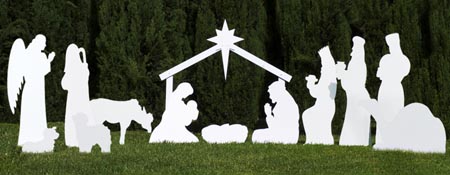Oh, Say Can You See: The story of our national anthem

Christian church with American flag
Its familiar opening chords bring us to our feet at the start of sporting events throughout the country. During the Olympics, we watch our nation’s top athletes proudly stand on podiums as it is being played in crowded arenas. We’ve heard its notoriously difficult notes sung – sometimes successfully and sometimes not – by celebrities, by choral groups and by children. You are sure to hear it accompanying firework displays this Fourth of July.
But what is the story behind “The Star-Spangled Banner”? Let’s find out.
American lawyer Francis Scott Key, age 35, was aboard a British ship in the Chesapeake Bay on the rainy night of Sept. 13, 1814, during the War of 1812. This second war between the young United States and Great Britain has taken an ugly turn just weeks before when the British had attacked Washington, D.C., burning the Capitol, the Library of Congress and the White House.
Key had boarded an enemy ship in hopes of negotiating the release of a friend, Dr. William Beanes, who had been taken prisoner. Although Key was successful in his legal efforts, his successful departure was thwarted when he and his companions overheard British plans to attack the city of Baltimore that night. Not wanting the Americans to tip off their compatriots, British officers prevented the men from returning to shore.
Key had to watch helplessly while British warships pounded Fort McHenry, which was just eight miles away in Baltimore Harbor, with shells and rockets for 25 hours without a break in the action. However, at daybreak, Key was struck by the inspiring sight of a tattered but clearly still flying American flag atop Fort McHenry. He scribbled down a poem, originally titled “The Defense of Fort McHenry,” that included these now famous words:
O! say can you see by the dawn’s early light,
What so proudly we hailed at the twilight’s last gleaming,
Whose broad stripes and bright stars through the perilous fight,
O’er the ramparts we watched, were so gallantly streaming?
And the rockets’ red glare, the bombs bursting in air,
Gave proof through the night that our flag was still there;
O! say does that star-spangled banner yet wave
O’er the land of the free and the home of the brave?
Key’s poem was printed in newspapers throughout the country, and people liked it so much that they set to the music of a popular English drinking song called “To Anacreon in Heaven” written by John Stafford Smith. People soon adopted the phrase “star spangled banner” from the next to last line of the poem as its title, and it became a standard patriotic tune of the 19th century. Key, who was born on August 1, 1779 in Frederick County (now Carroll County), Maryland, continued his law career and was later appointed U.S. attorney for the District of Columbia. He died of pleurisy in 1843.
In 1916, President Woodrow Wilson proclaimed that “The Star-Spangled Banner” should be played at official events across the nation. The United States officially adopted the song as its national anthem on March 3, 1931.
Today, the flag that flew over Fort McHenry is displayed at the Smithsonian Institution’s Museum of American History in Washington, D.C. The fragile banner underwent an extensive cleaning and restoration process beginning in 1999, and in 2008 it became the centerpiece of a state-of-the-art gallery at the Smithsonian.
Historians, curators, organic scientists and engineers combined efforts in a special conservation lab designed just for the famous flag. Some of the detailed work included snipping 1.7 million stitches in order to remove a linen backing that had been added to the flag in 1914, lifting debris from the flag using cosmetic sponges and brushing it with an acetone-water solution to remove dirt embedded in its fibers. The experts then added a sheer polyester backing to help support the tattered flag.
The goal of the project was never to make the flag look like it did before the bombardment, Suzanne Thomassen-Krauss, a lead conservator for the project, told Smithsonian Magazine, but to extend its lifetime. “We didn’t want to change any of the history written on the artifact by stains and soil,” she said. “Those marks tell the flag’s story.”
So now that you know a little about the history of the song and the flag, you may be wondering why “The Star-Spangled Banner” is so difficult to sing that even trained singers sometimes turn down offers to perform it. Basically, it is because of its wide range. Many popular performers are not comfortable singing outside a range of a single octave, and the range of the anthem is more than an octave and a half.
Some anthem singers sing in Bb major in order to be able to reach the high notes. In a video from Smithsonian Folkways, for example, noted American folk singer, tells his audience to join in on singing “The Star-Spangled Banner” after assuring them that he is using “a very, very low key, so everybody can sing it.”
Anthem singers frequently get tripped up by the words as well. Some even have taken to having the anthem’s lyrics with them in case they go blank. “Singers forget the words because they haven’t thought about how meaningful they are,” said Michael Dean, chair of the Department of Music and director of vocal studies at UCLA, in an interview with ABC News in 2012. “When singers understand how powerful the poem is, the words become easier to remember.”
The story behind the song and the flag it represents convey much of what it means to be an American and, as a result, can evoke powerful emotions. Most people agree that the anthem is intended to be sung out loud with gusto, and there is no better time than the Fourth of July to do just that.









